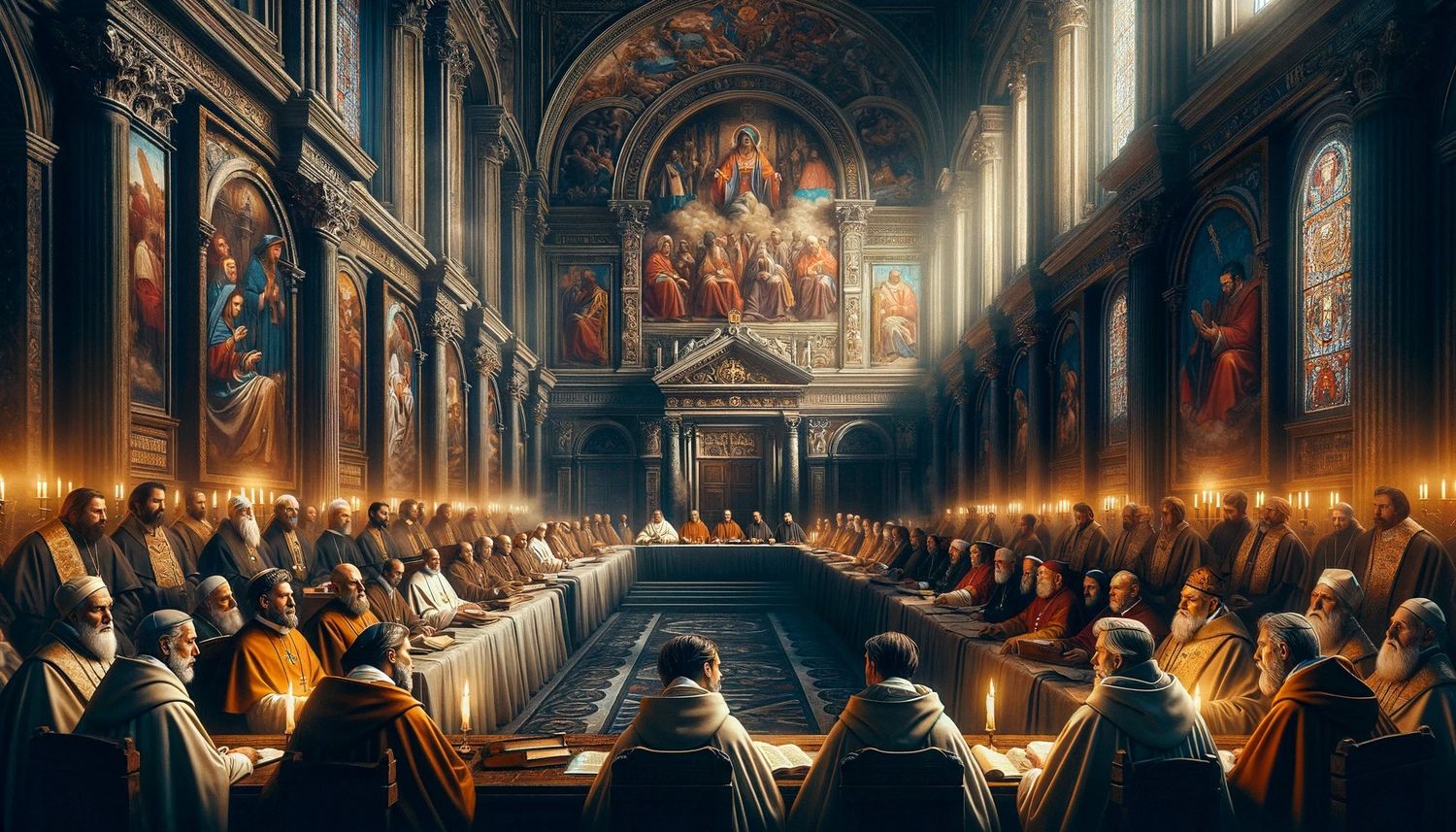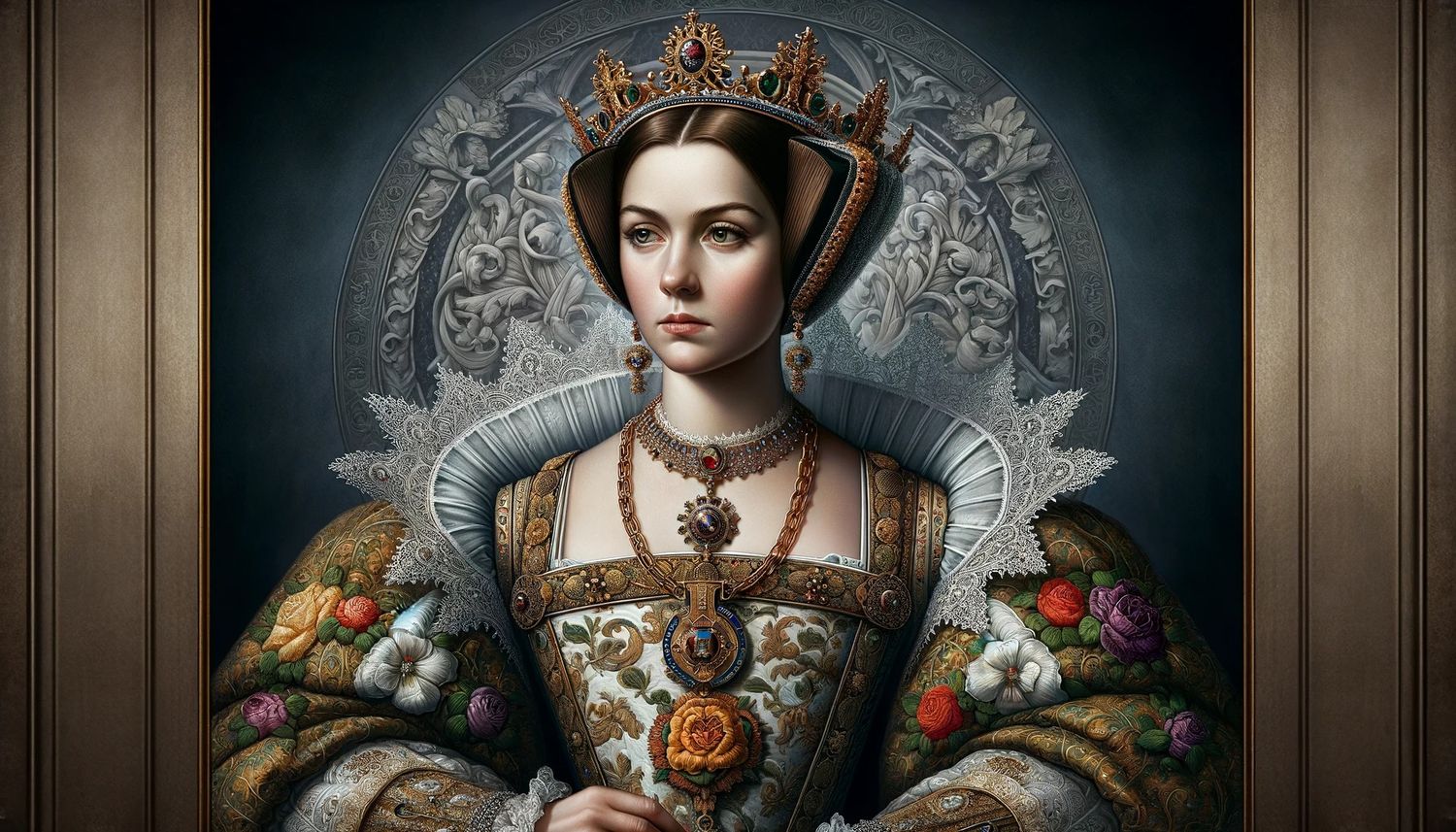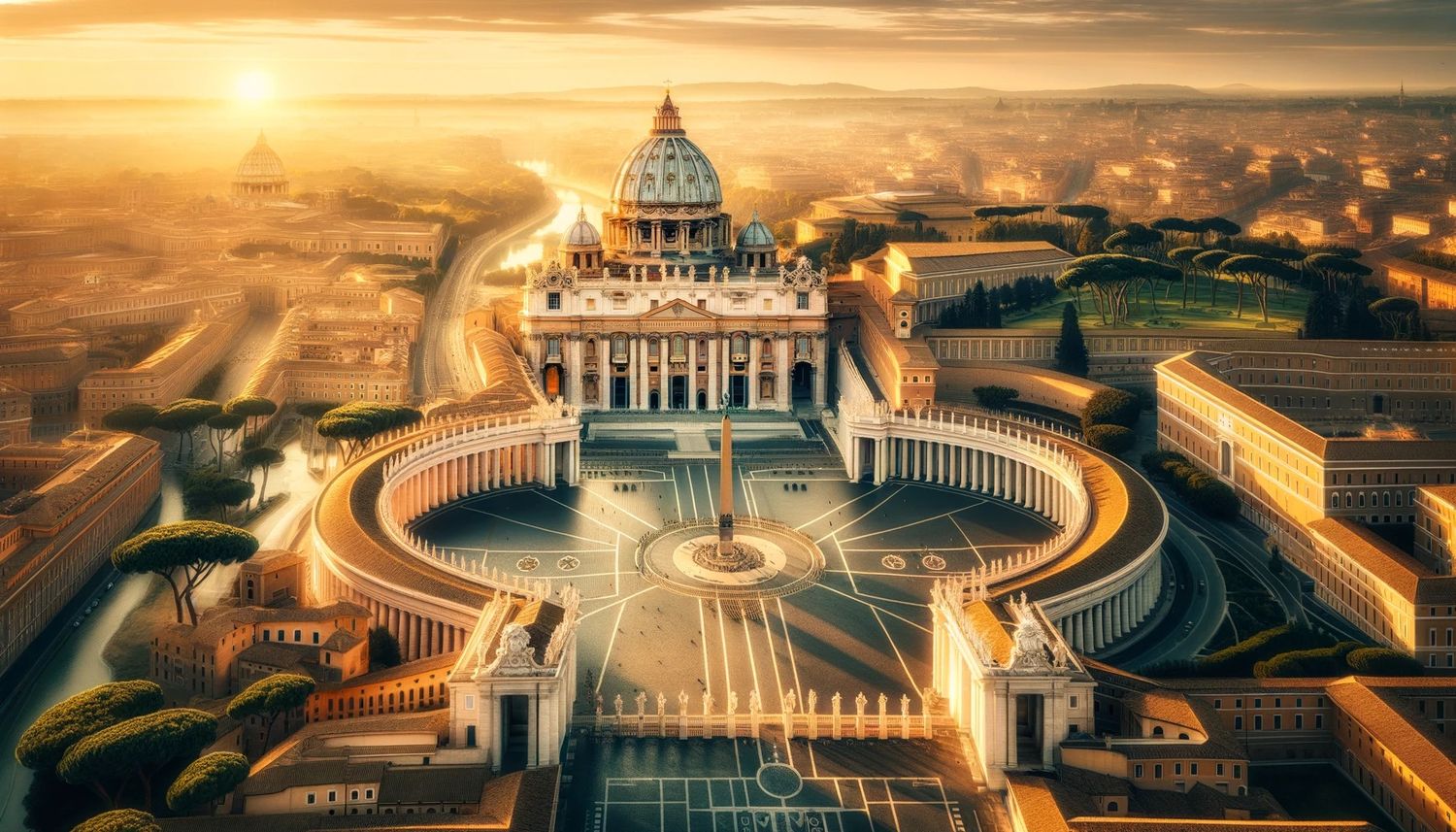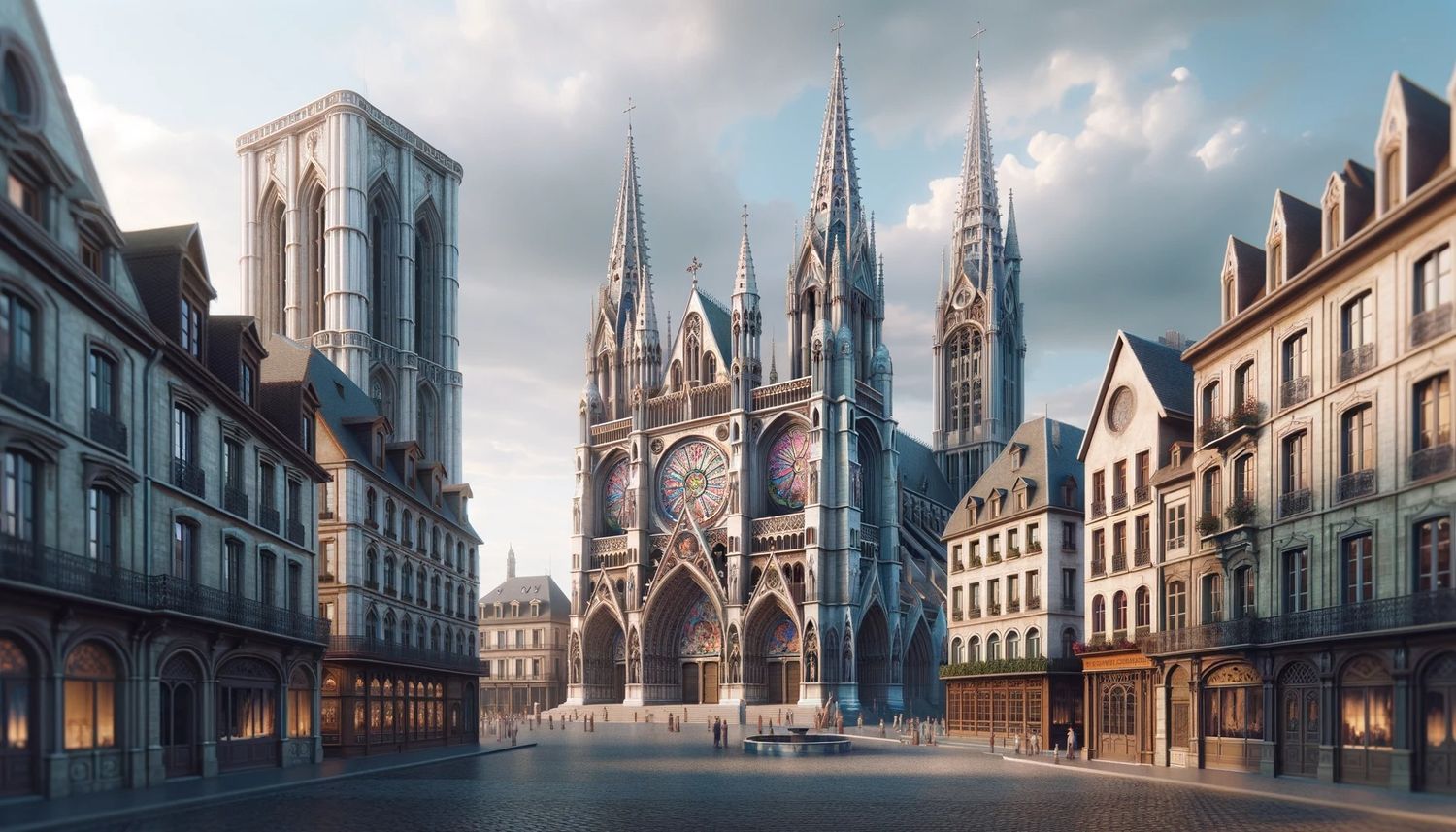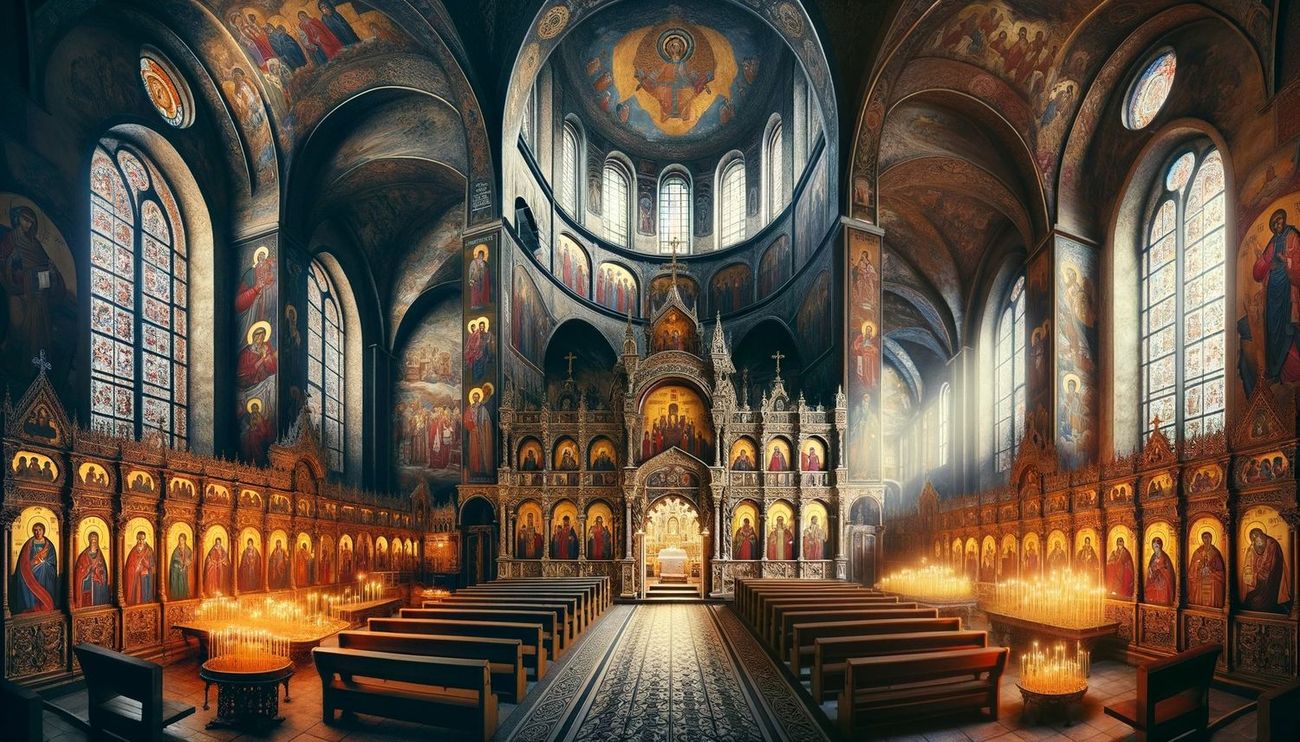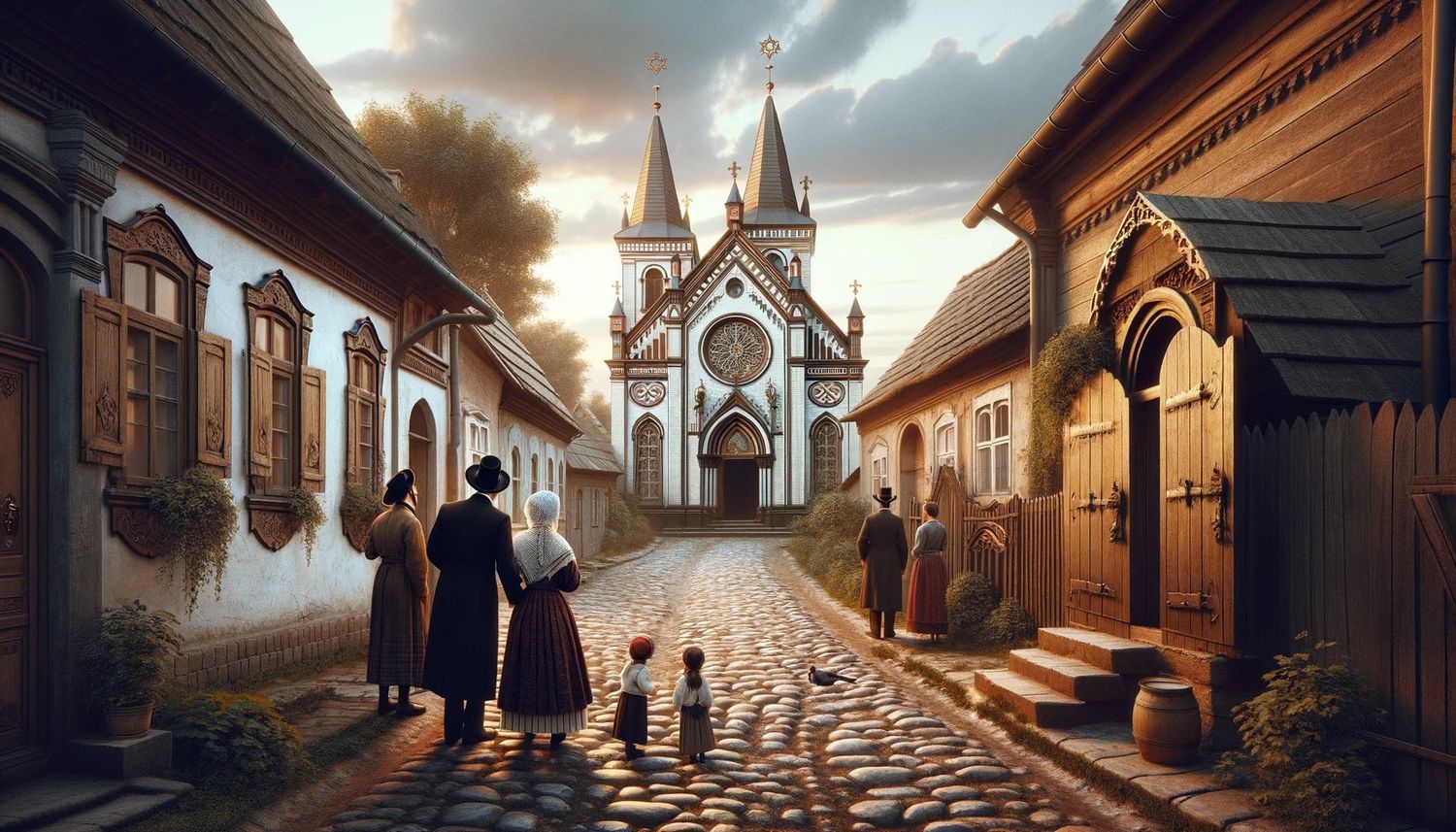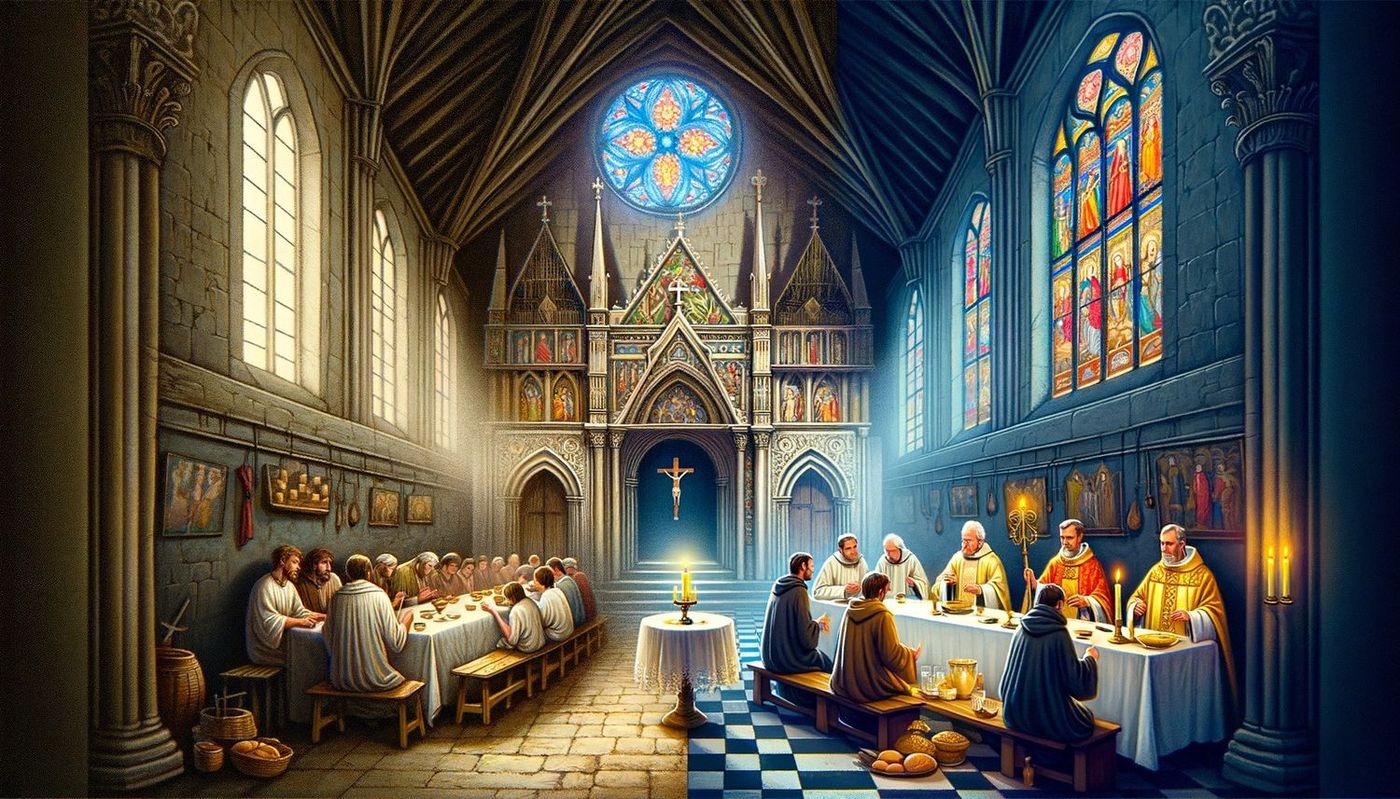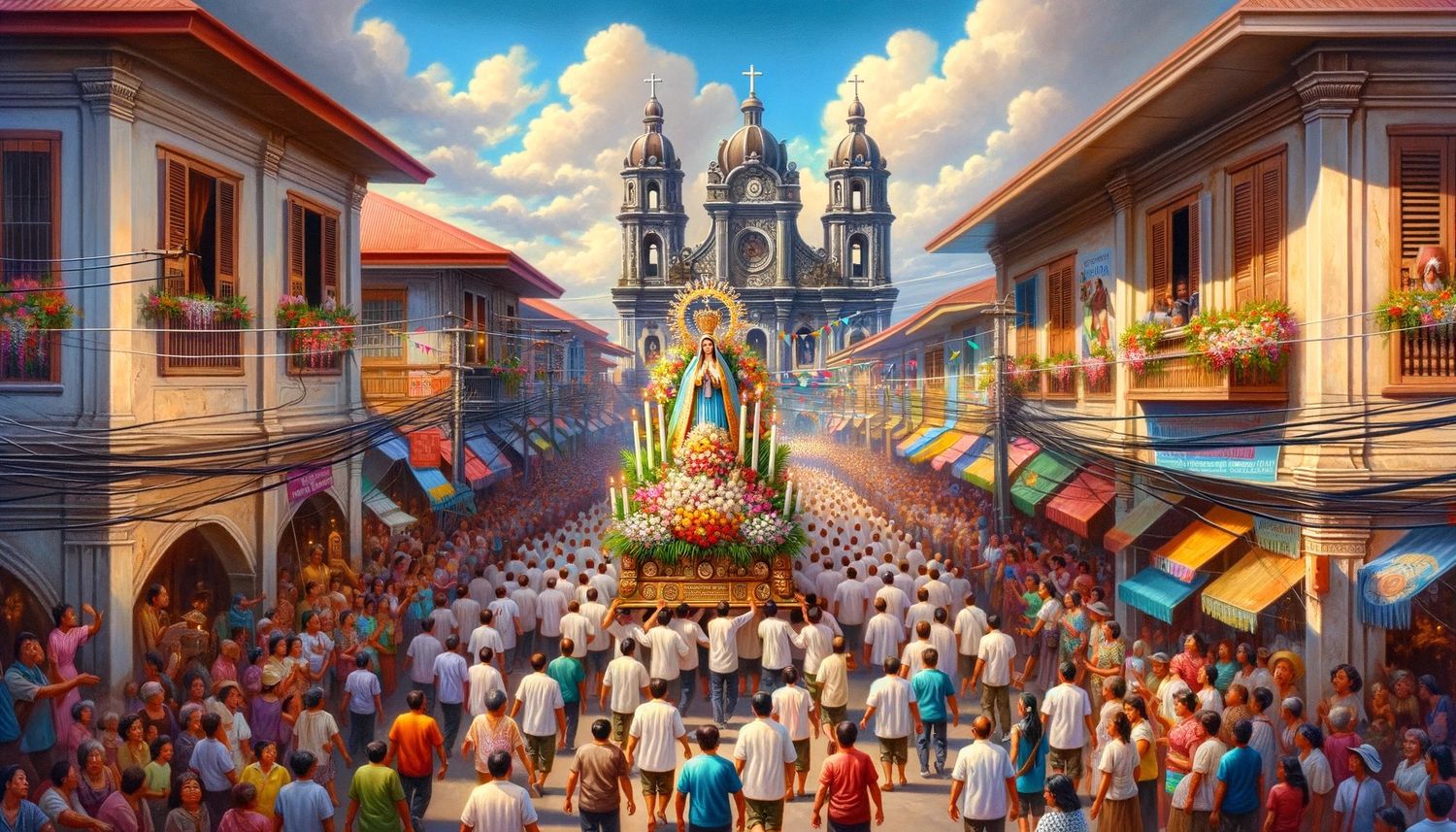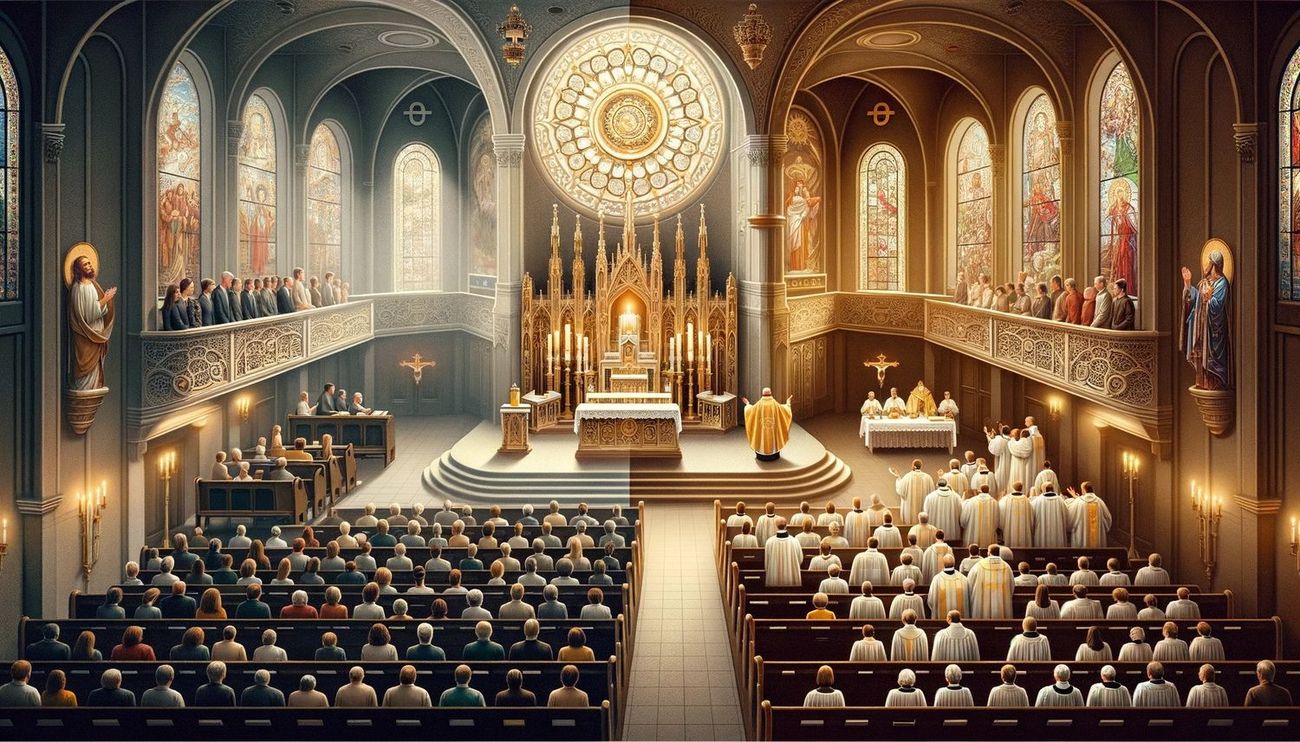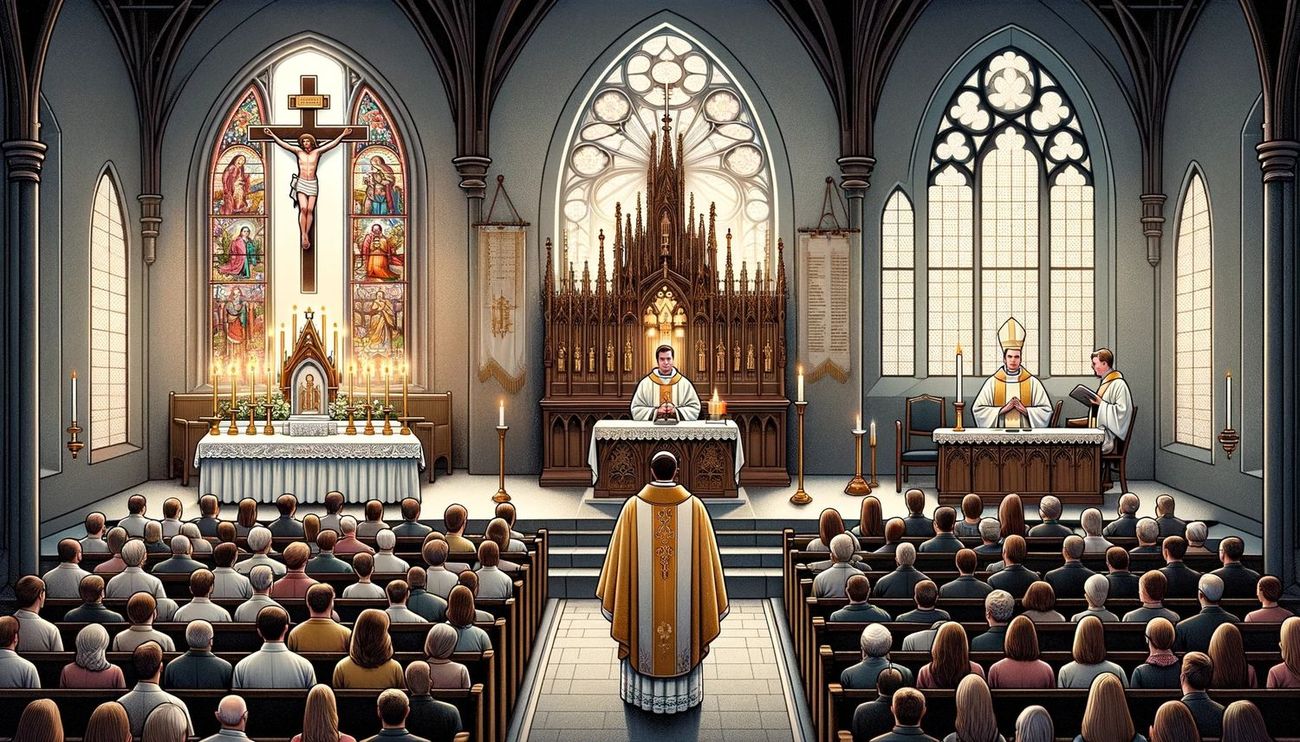Home>Theology and Spirituality>Which Is A Valid Distinction Between Roman Catholicism And Eastern Orthodoxy
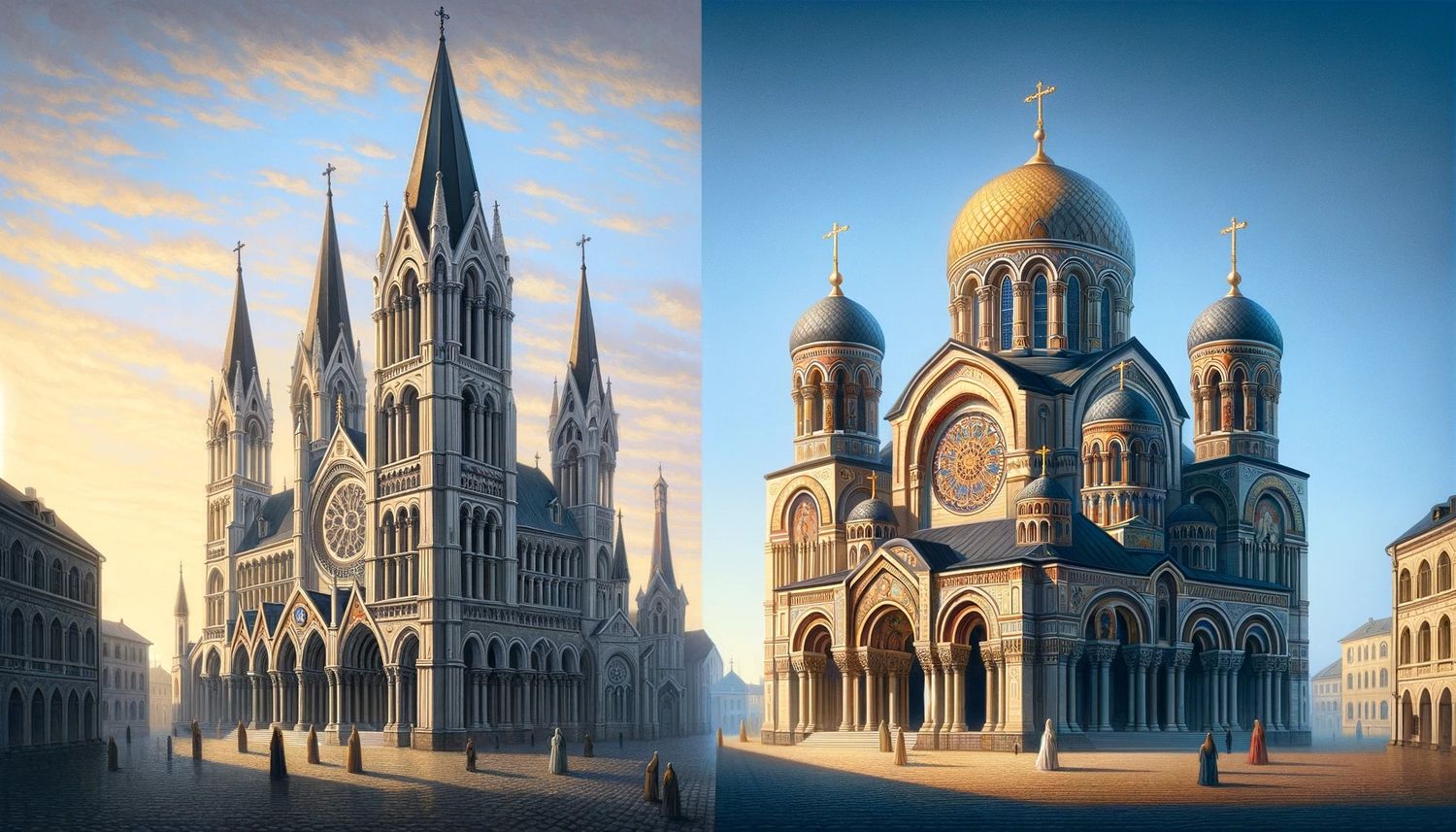

Theology and Spirituality
Which Is A Valid Distinction Between Roman Catholicism And Eastern Orthodoxy
Published: February 17, 2024
Peter Smith, Editorial Director at Christian.net, combines deep insights into faith, politics, and culture to lead content creation that resonates widely. Awarded for his contributions to religious discourse, he previously headed a major organization for religious communicators, enhancing dialogue on faith's societal impacts.
Discover the key differences between Roman Catholicism and Eastern Orthodoxy in terms of theology and spirituality. Explore the distinct beliefs and practices of these two major branches of Christianity.
(Many of the links in this article redirect to a specific reviewed product. Your purchase of these products through affiliate links helps to generate commission for Christian.net, at no extra cost. Learn more)
Table of Contents
Introduction
The distinction between Roman Catholicism and Eastern Orthodoxy is a topic of profound significance, encompassing centuries of history, theological divergence, and cultural influence. These two major branches of Christianity have shaped the spiritual landscape of the world, each with its distinctive traditions, beliefs, and practices. Understanding the differences between Roman Catholicism and Eastern Orthodoxy is essential for appreciating the rich tapestry of Christian faith and the complexities that have arisen over time.
The schism between the Roman Catholic Church and the Eastern Orthodox Church in 1054 marked a pivotal moment in Christian history, leading to the development of separate traditions and doctrines. This division, often referred to as the Great Schism, had far-reaching implications for the religious, political, and social dynamics of Europe and the broader Christian world. As a result, the theological, ecclesiastical, and cultural disparities between Roman Catholicism and Eastern Orthodoxy continue to shape the identities of these distinct Christian traditions.
Exploring the nuances of these differences offers a glimpse into the diverse interpretations of Christian teachings, the evolution of ecclesiastical authority, and the varying expressions of worship and spirituality. By delving into the historical, theological, and liturgical disparities, we can gain a deeper appreciation for the multifaceted nature of Christianity and the enduring impact of the schism on the global Christian community.
In the subsequent sections, we will embark on a comprehensive exploration of the historical background, theological differences, authority and governance structures, and liturgical practices that distinguish Roman Catholicism from Eastern Orthodoxy. Through this exploration, we will uncover the intricate layers of tradition, doctrine, and spirituality that have shaped these two venerable branches of Christianity.
Historical Background
The historical roots of the division between Roman Catholicism and Eastern Orthodoxy can be traced back to the early centuries of Christianity. In the first millennium, the Christian Church was characterized by a unified ecclesiastical structure, with the Bishop of Rome (the Pope) and the Patriarch of Constantinople (the Ecumenical Patriarch) holding prominent positions of authority. However, as the Roman Empire faced political, cultural, and religious upheavals, the unity of the Church began to face significant challenges.
One of the pivotal events that contributed to the schism was the gradual divergence between the Latin-speaking West and the Greek-speaking East. This linguistic and cultural divide, coupled with theological disagreements, gradually led to a growing sense of estrangement between the two regions. Doctrinal disputes, such as the filioque controversy regarding the procession of the Holy Spirit, further exacerbated the tensions between the Western and Eastern Christian communities.
The year 1054 marked a definitive turning point in Christian history, as the formal split between the Roman Catholic Church and the Eastern Orthodox Church unfolded. The mutual excommunication of the Pope and the Ecumenical Patriarch symbolized the culmination of centuries of theological, ecclesiastical, and cultural divergence. The schism resulted in the establishment of separate spheres of influence, with the Roman Catholic Church predominantly shaping the religious landscape of Western Europe, while the Eastern Orthodox Church exerted its influence in the Byzantine Empire and the Slavic regions.
The aftermath of the Great Schism witnessed the consolidation of distinct theological traditions, liturgical practices, and ecclesiastical structures within Roman Catholicism and Eastern Orthodoxy. The Roman Catholic Church developed its unique doctrinal formulations, including the primacy of the papacy and the development of dogmas such as the Immaculate Conception and papal infallibility. Conversely, the Eastern Orthodox Church emphasized conciliarity, the mystical theology of theosis, and the preservation of ancient liturgical traditions.
The historical background of the division between Roman Catholicism and Eastern Orthodoxy underscores the complex interplay of theological, cultural, and geopolitical factors that have shaped the identities of these two Christian traditions. This historical context provides a foundation for understanding the subsequent theological differences, authority structures, and liturgical practices that distinguish Roman Catholicism from Eastern Orthodoxy.
Theological Differences
The theological variances between Roman Catholicism and Eastern Orthodoxy encompass a wide array of doctrinal, spiritual, and philosophical distinctions that have evolved over centuries. These differences have contributed to the unique theological identities of each tradition, shaping their beliefs, practices, and interpretations of Christian teachings.
One of the central theological disparities revolves around the understanding of the procession of the Holy Spirit. In Roman Catholicism, the filioque clause, which asserts that the Holy Spirit proceeds from both the Father and the Son, has been a point of contention. This addition to the Nicene Creed was a source of theological divergence, as Eastern Orthodoxy maintains that the Holy Spirit proceeds solely from the Father. This theological nuance reflects differing perspectives on the inner workings of the Holy Trinity and the relationships between the divine persons.
Another significant theological contrast lies in the understanding of original sin and its implications for human nature. Roman Catholicism emphasizes the concept of original sin inherited from Adam and Eve, leading to a state of moral corruption that can be cleansed through the sacrament of baptism. In contrast, Eastern Orthodoxy views original sin as ancestral sin, highlighting the ancestral consequences of the Fall rather than an inherent guilt passed down through generations. This nuanced theological perspective shapes the respective approaches to soteriology and the understanding of humanity's relationship with God.
Furthermore, the theological frameworks of Roman Catholicism and Eastern Orthodoxy diverge in their emphasis on doctrinal development and authority. The Roman Catholic Church upholds the doctrine of papal infallibility, asserting that the Pope is preserved from error when defining matters of faith and morals ex cathedra. This doctrine underscores the centralized authority of the papacy in matters of theological interpretation and doctrinal formulation. In contrast, Eastern Orthodoxy emphasizes conciliarity, attributing the highest authority to ecumenical councils where bishops collectively discern matters of faith and doctrine. This difference in ecclesial governance reflects distinct theological approaches to the interpretation and preservation of Christian teachings.
These theological disparities, among others, underscore the rich tapestry of Christian thought and the diverse theological landscapes within Roman Catholicism and Eastern Orthodoxy. The nuanced differences in understanding the Trinity, original sin, and ecclesial authority contribute to the theological distinctiveness of these two venerable Christian traditions, shaping their spiritual ethos and doctrinal emphases.
Authority and Governance
The structures of authority and governance within Roman Catholicism and Eastern Orthodoxy represent fundamental aspects of their respective ecclesiastical traditions. These systems of leadership, decision-making, and theological interpretation have evolved over centuries, reflecting the distinct approaches to ecclesial authority within each tradition.
In Roman Catholicism, the doctrine of papal primacy holds a central position in the hierarchical structure of the Church. According to Catholic teaching, the Pope, as the Bishop of Rome and the successor of Saint Peter, possesses a unique and supreme authority over the entire Church. This authority is believed to be derived from the divine commission given to Peter by Jesus Christ, as recorded in the New Testament. The Pope is regarded as the Vicar of Christ on earth and is vested with the power to define dogma, resolve doctrinal disputes, and exercise jurisdiction over the global Catholic community. The concept of papal infallibility, proclaimed at the First Vatican Council in 1870, further underscores the belief that the Pope is preserved from error when speaking ex cathedra on matters of faith and morals. This centralized model of authority emphasizes the role of the papacy as the ultimate arbiter of doctrinal and disciplinary matters within Roman Catholicism.
In contrast, Eastern Orthodoxy adheres to a conciliar model of governance, emphasizing the collective authority of ecumenical councils and the consensus of the bishops. While the Ecumenical Patriarch of Constantinople holds a position of honor within the Eastern Orthodox communion, he does not possess the same centralized authority as the Pope in Roman Catholicism. Decisions regarding doctrine, discipline, and ecclesiastical administration are typically reached through synodical gatherings, where bishops deliberate and discern matters of theological significance. The emphasis on conciliarity reflects the belief that the Holy Spirit guides the Church collectively, and that the unity of the bishops is essential for preserving the integrity of the faith. This decentralized approach to authority underscores the significance of the episcopate and the communal discernment of theological truth within Eastern Orthodoxy.
The contrasting models of authority and governance in Roman Catholicism and Eastern Orthodoxy exemplify the diverse expressions of ecclesiastical leadership and decision-making within the Christian tradition. These distinct approaches have contributed to the theological, doctrinal, and administrative disparities between the two traditions, shaping their respective identities and modes of ecclesial governance.
Liturgical Practices
The liturgical practices of Roman Catholicism and Eastern Orthodoxy encapsulate the rich tapestry of worship, spirituality, and communal devotion that characterize these two Christian traditions. These liturgical expressions, steeped in centuries of tradition and theological significance, serve as focal points for the encounter with the divine, the communal celebration of faith, and the embodiment of sacred rituals.
In Roman Catholicism, the liturgical landscape is shaped by the celebration of the Mass, which holds a central place in the spiritual life of the faithful. The Roman Rite, the predominant liturgical tradition within Roman Catholicism, encompasses a diverse array of rituals, prayers, and sacramental actions that constitute the Eucharistic celebration. The Mass is characterized by its structured format, including the Liturgy of the Word, where sacred scripture is proclaimed and expounded upon, and the Liturgy of the Eucharist, where the consecration of bread and wine occurs, culminating in the reception of the Body and Blood of Christ by the faithful. The Roman Catholic liturgical tradition also encompasses a rich calendar of feasts, solemnities, and liturgical seasons, each imbued with distinctive rituals, devotions, and spiritual significance.
In Eastern Orthodoxy, the liturgical practices are deeply rooted in the Byzantine tradition, characterized by its elaborate and symbolic expressions of worship. The Divine Liturgy, the primary liturgical celebration in Eastern Orthodoxy, is marked by its mystical and transcendent atmosphere, incorporating intricate liturgical chants, iconography, and ceremonial gestures. The Divine Liturgy unfolds as a sacred journey, guiding the faithful through a sequence of prayers, hymns, and ritual actions that culminate in the reception of the Eucharist. The liturgical calendar of Eastern Orthodoxy encompasses a rich tapestry of feasts, fasts, and liturgical cycles, each bearing profound spiritual significance and shaping the rhythm of communal worship and devotion.
The differences in liturgical practices between Roman Catholicism and Eastern Orthodoxy reflect distinct theological emphases, spiritual sensibilities, and cultural expressions. While both traditions share a common commitment to the sacramental life of the Church and the centrality of the Eucharist, the nuances in liturgical rites, prayers, and devotional customs contribute to the unique spiritual identities of Roman Catholicism and Eastern Orthodoxy.
The liturgical practices of Roman Catholicism and Eastern Orthodoxy serve as vibrant expressions of faith, embodying the theological, spiritual, and cultural dimensions of these venerable Christian traditions. The celebration of the Mass in Roman Catholicism and the Divine Liturgy in Eastern Orthodoxy encapsulates the profound encounter with the sacred, the communal expression of devotion, and the timeless continuity of Christian worship across the ages.
Read more: Why Catholicism Or Orthodoxy
Conclusion
In conclusion, the distinction between Roman Catholicism and Eastern Orthodoxy encompasses a multifaceted tapestry of historical, theological, ecclesiastical, and liturgical disparities that have shaped the identities of these two venerable Christian traditions. The Great Schism of 1054 marked a definitive turning point, leading to the development of separate theological trajectories, ecclesiastical structures, and cultural expressions within Roman Catholicism and Eastern Orthodoxy.
The historical background of the division underscores the complex interplay of linguistic, cultural, and theological factors that contributed to the schism. The theological differences, including divergent perspectives on the procession of the Holy Spirit, original sin, and ecclesial authority, have given rise to distinct doctrinal formulations and spiritual emphases within each tradition. Furthermore, the contrasting models of authority and governance, with the centralized papal primacy in Roman Catholicism and the emphasis on conciliarity in Eastern Orthodoxy, reflect diverse approaches to ecclesiastical leadership and decision-making.
The liturgical practices of Roman Catholicism and Eastern Orthodoxy serve as vibrant expressions of faith, embodying the theological, spiritual, and cultural dimensions of these venerable Christian traditions. While both traditions share a common commitment to the sacramental life of the Church and the centrality of the Eucharist, the nuances in liturgical rites, prayers, and devotional customs contribute to the unique spiritual identities of Roman Catholicism and Eastern Orthodoxy.
Understanding the distinctions between Roman Catholicism and Eastern Orthodoxy offers valuable insights into the rich diversity of Christian thought, worship, and tradition. It fosters a deeper appreciation for the enduring legacy of the Great Schism and its profound impact on the global Christian community. Moreover, it highlights the importance of dialogue, mutual understanding, and ecumenical engagement as essential pathways toward unity and reconciliation within the broader Christian family.
In essence, the exploration of the historical, theological, ecclesiastical, and liturgical disparities between Roman Catholicism and Eastern Orthodoxy invites us to embrace the richness of Christian diversity while seeking common ground in the shared pursuit of faith, love, and unity within the body of Christ.

